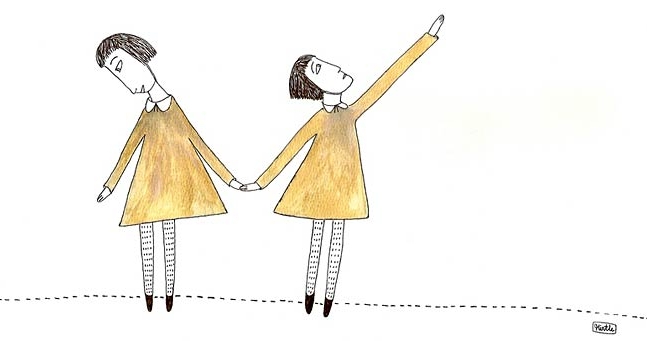BEING THE SKY RATHER THAN THE CLOUD
by Kevin Smith

 It is common that during the course of Touch Practice work, we experience emotions. Sometimes touching different parts of the body will elicit different emotions, some pleasant and welcome, others difficult and challenging to feel.
It is common that during the course of Touch Practice work, we experience emotions. Sometimes touching different parts of the body will elicit different emotions, some pleasant and welcome, others difficult and challenging to feel.
Emotions normally pass across the energy body the way clouds move across the sky. One of my jobs when I work with someone is to keep the weather moving, and I do that primarily by making sure my partner is breathing. Breathing helps keep the emotions moving in and through the body; we breathe into them and breathe them out. Motion also helps emotion keep moving through the body. As one of my yoga teachers once said about getting through difficult emotion, “if you dance it, it will move.”
In Touch Practice and in life, when we run into certain kinds of emotional experience, we sometimes tend to clamp down around that emotion. One of the indicators that this is happening is we hold our breath, or lose the breath (the breath becomes shallow and outside of our awareness.) For those of you who do yoga, you know that when we are presented with a challenging stretch or pose, we have the same tendency to hold the breath. In yoga and in emotional life, keeping the breath moving helps prevent clamping (and cramping!)

 When a person hits a challenging emotional stretch in Touch Practice work, beyond holding the breath, the person will try to get me to stop touching or in some cases stop moving at all, as though they are so taken by their emotion that they don’t want to be distracted by anything BUT the emotion. I can literally feel their body “clamp” around the emotion.
When a person hits a challenging emotional stretch in Touch Practice work, beyond holding the breath, the person will try to get me to stop touching or in some cases stop moving at all, as though they are so taken by their emotion that they don’t want to be distracted by anything BUT the emotion. I can literally feel their body “clamp” around the emotion.
It’s like a diner who shifts from eating a bowl of soup to throwing himself into the soup, and it can be just as messy. Say what you want about the joy of eating, but “becoming one with your soup” will not enhance your dining experience, Zenful as it may sound. The tendency to clamp around a feeling happens with both positive-tone and negative-tone emotions. A person who is feeling erotic energy or feeling loved will want to steep in that just as much as a person feeling sadness or loneliness.
Clamping down on an emotion is also characterized by the tendency of the person to identify with the emotion. The emotion shifts from “something we experience” to “something we are.” We momentarily become the contents of our container, rather than being the container, as if the sky were to suddenly turn into a cloud, rather than being the background over which the cloud passes.
To differentiate these states, think of a person you know who is normally somewhat even-tempered but might occasionally become angry. Now, think of an angry person. Sense the difference? Instead of “Joe who is feeling angry,” we get “Angry Joe.” Instead of Mary who feels grief at the loss of her husband, we get Mary-the-grief-stricken-scorned-spouse.
It is possible to identify with an emotional state so completely that our personality is largely eclipsed by it. We become monochromatic, lose perspective, and begin to fit our experience into the narrowness of our clamped emotional state rather than staying wide open to new experience.

 In the case of “Joe,” if he begins to identify with the anger, he will feel most alive when he is angry, and so he will seek out, unconsciously, experiences where he can feel anger. Every new experience will be scanned for possible fuel for anger, and he’ll head right there. People who have identified with an emotion often lament the repeated experience of that emotion, even though it is they themselves who continually fuel and recreate the emotion on a regular (if unconscious) basis.
In the case of “Joe,” if he begins to identify with the anger, he will feel most alive when he is angry, and so he will seek out, unconsciously, experiences where he can feel anger. Every new experience will be scanned for possible fuel for anger, and he’ll head right there. People who have identified with an emotion often lament the repeated experience of that emotion, even though it is they themselves who continually fuel and recreate the emotion on a regular (if unconscious) basis.
Helping people “unclamp” as they run into patches of emotion is a big part of the work in Touch Practice. It’s not necessarily fun; I often annoy people when I try to point to “sky” as they get really interested in “cloud.” I’m sure at times, it must feel like I’m trying to keep them from having their experience. That’s not my intention; I’m actually trying to help them avoid falling headfirst into one single, temporary, passing emotion so that they can be aware of their real experience–their entire experience, including the experience beyond that single emotion.
The next time you feel completely consumed by an emotion, notice that if there’s a piece of you aware enough to realize this, that piece, which some call the “witness consciousness,” is NOT completely consumed by the emotion; in fact, it’s emotionless. It is bigger, more spacious, and neutral, like the sky. It stands outside of emotion and can observe it, the way the sky stands outside the weather moving across it.
And the advantage to not clamping around an emotion, whether it be positive or negative, the advantage to remaining the sky rather than becoming the weather? Options. We have more options, and better options, regarding what to do next, how to proceed, whether to respond, what to change, when we are fully aware of our experience than we do when we allow ourselves to be consumed by or identified with a temporary emotional state.
Remaining our biggest, widest-open selves, being the sky rather than the cloud, being the container rather than the contents, does not in any way diminish our ability to experience our emotions. On the contrary, it enhances our ability to see clearly and be aware of our experience. Thought of another way, you don’t have to throw yourself into a plate of lasagna in order to fully enjoy the experience of having the lasagna; quite the contrary. Really paying attention, as a careful observer, to tasting, seeing, or feeling something, is essential to the enjoyment of that experience, whether it’s food, relationship, or emotion.




